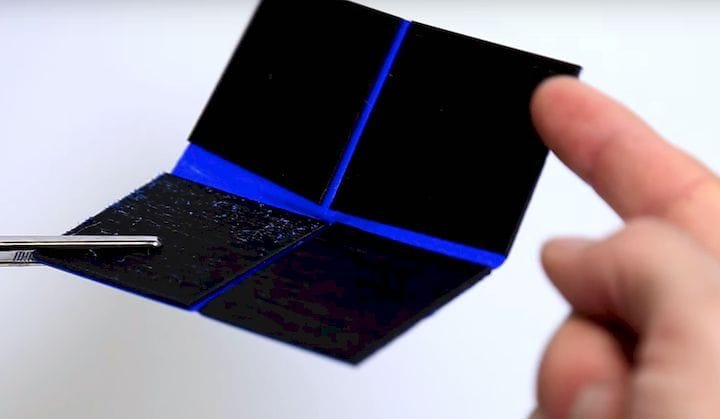![An automatically folding 3D print [Source: ETH Zurich]](https://fabbaloo.com/wp-content/uploads/2020/05/image-asset_img_5eb0a384429e6.jpg)
Overcoming build volume limitations can be done with origami-like 3D printing approaches.
Researchers at ETH Zurich and Purdue have developed an unusual method of producing foldable mechanical devices using 3D printing, inspired by origami.
![An origami folding object, inspired by the common earwig [Source: ETH Zurich]](https://fabbaloo.com/wp-content/uploads/2020/05/image-asset_img_5eb0a3849c1dd.jpg)
They explain the concept:
“When open, the earwig wing expands ten times larger than when closed – one of the highest folding ratios in the animal kingdom. The large wing area allows the insect to fly, while the compact way the wings retracts enables the creature to tunnel underground without damaging its wings. The wing design has another unique feature; however, in its open, locked state the wing remains stiff with no need for muscle power to provide stability. With just one “click”, the wing folds into itself completely, without muscular actuation.”
Can this effect be reproduced with 3D printing? Indeed it can, if multiple materials are used. At top we can see a prototype device 3D printed in dual materials on an Ultimaker desktop 3D printer. The structure is designed to automatically fold from four elements back into only two at a touch.
You can see how this works in the video:
This is a form of “4D” printing, where objects can assume a different shape after printing completes. There are several advantages to this approach.
First, it enables a print to take place within a build volume far smaller than the actual size of the object. This is a great financial advantage because the cost of larger print volume is not always linear as you raise the size.
The second advantage is that a smaller object can more easily be transported to its destination, where it can then unfurl itself and begin operation. This would be most useful in space applications, where larger rockets are most certainly not financially desirable.
This research is somewhat different, though, as it seems to produce a mechanism that can repeatedly fold and unfold. The implication is that a mechanism that requires repeated folding and unfolding could be designed with these principles.
![A more complex folding 3D print [Source: ETH Zurich]](https://fabbaloo.com/wp-content/uploads/2020/05/image-asset_img_5eb0a384e6512.jpg)
I also believe that the rather simple example shown by the researchers is only the tip of the iceberg. There are undoubtedly far more complex designs that could provoke much more interesting mechanical motion, but there would have to be sophisticated software design assists created to do so.
The ultimate result of this line of research could lead to a world of solid-state mechanical objects that are produced in a single print operation, yet can perform different mechanical duties.
Via ETH Zurich (Hat tip to Benjamin)











A research thesis details the incredibly complex world of volumetric 3D printing. We review the highlights.